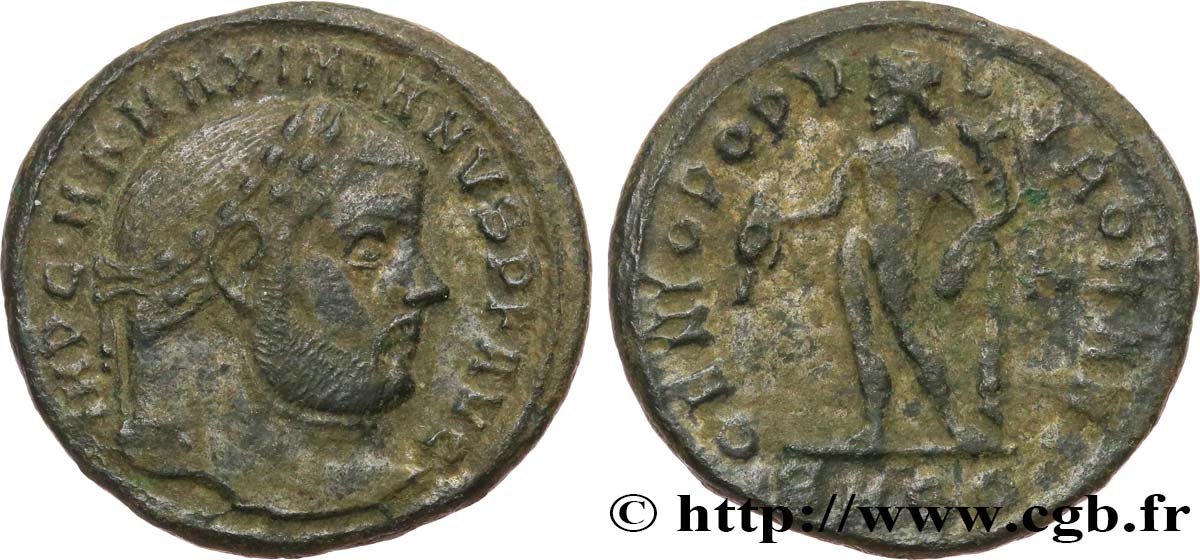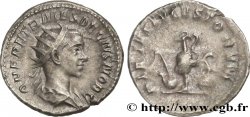brm_674557 - MAXIMIANUS HERCULIUS Follis ou nummus
100.00 €(Approx. 116.00$ | 88.00£)
Quantity
Add to your cart

Type : Follis ou nummus
Date: 303/4-305
Mint name / Town : Serdica
Metal : copper
Diameter : 26,5 mm
Orientation dies : 12 h.
Weight : 9,74 g.
Rarity : R1
Officine: 1re
Coments on the condition:
Ce type semble plus rare que ne le laissent supposer les ouvrages généraux. Buste large à l’usure régulière, plus marquée au revers qu’au droit. Belle patine verte
Obverse
Obverse legend : IMP C M A MAXIMIANVS P F AVG.
Obverse description : Tête laurée de Maximien Hercule à droite (O*).
Obverse translation : “Imperator Cæsar Marcus Aurelius Maximianus Pius Felix Augustus”, (L’empereur césar Marc Aurèle Maximien pieux heureux auguste).
Reverse
Reverse legend : GENIO POPV-L-I ROMANI/ -|A// .SM.SD..
Reverse description : Genius (le Génie) debout de face, le manteau sur l'épaule gauche, tenant une patère dont la liqueur se déverse de la main droite et une corne d'abondance de la main gauche.
Reverse translation : “Genio Populi Romani”, (Au Génie du Peuple romain).
Commentary
Rubans de type 2. La première émission de l’atelier de Serdica semble plus rare que ne le le laissent supposer les ouvrages généraux. C’est la première fois que nous proposons un exemplaire à la vente.
Type 2 ribbons. The first issue from the Serdica workshop seems rarer than the general works suggest. This is the first time we are offering a example for sale.
Type 2 ribbons. The first issue from the Serdica workshop seems rarer than the general works suggest. This is the first time we are offering a example for sale.








 Report a mistake
Report a mistake Print the page
Print the page Share my selection
Share my selection Ask a question
Ask a question Consign / sell
Consign / sell
 Full data
Full data















